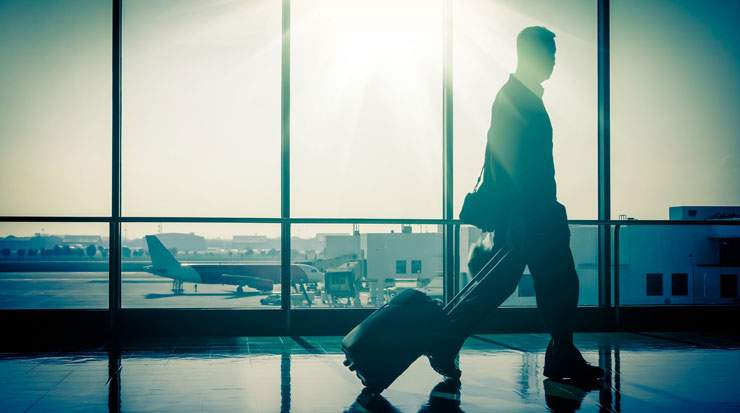THE ENCOURAGING NUMBERS HOWEVER ALSO POSE SIGNIFICANT CHALLENGES TO THE REGION’S AVIATION INFRASTRUCTURE, HUMAN RESOURCES, INTER-CONNECTIVITY, SECURITY TECHNOLOGIES AND SUSTAINABILITY.
Based on Airports Council International’s (ACI) World Report, passenger traffic in the Middle East and North Africa (MENA) region grew 6.5 percent in 2016 with the UAE, Saudi Arabia, Qatar and Oman registering 7.6 percent, nine percent, 20.4 percent and 17.4 percent growth, respectively, compared to 2015.
Furthermore, as concluded in the 6th Arab Aviation Summit’s Whitepaper report, the Middle East is expected to post a five percent growth and see an extra 258 million passengers on routes to, from and within the region by 2035.
These figures give several reasons for confidence amongst investors, governments and the travel and tourism industry, while also demonstrating the sector’s resilience to potential challenges emerging from economic and geopolitical uncertainties.
As Muhammad Ali Albakri, regional vice president, Africa and Middle East, International Air Transport Association (IATA), disclosed, the aviation sector in the Middle East supports 2.4 million jobs and contributes nearly USD160 billion in economic activities.
Ali Tounsi, secretary general, ACI Africa, further explained that the region’s leading position in the global aviation sector has rapidly evolved during the last 10 years, primarily due to its strategic location as an intercontinental hub as well as the growth of low-cost carriers.
In this fast changing landscape, airports in the region have been dramatically transformed from places largely dealing with airline and aircraft activities to multifunctional centres and complex businesses in their own right.
“Significant construction of new facilities […] allowing operators and airlines to capitalise on their airports’ geographical location, to connect to the world’s major tourist destinations and centres of commerce,” elaborated Tounsi.
With more than 65 million passengers passing through its gates every year, Dubai International's passenger traffic climbed 7.4 percent during the first quarter (Q1) of the year, with the hub welcoming 22,496,596 travellers compared to 20,948,690 during the corresponding period in 2016.
Aiming to increase its capacity from 75 million to 90 million travellers, Dubai’s gateway unveiled Concourse D in 2016, the result of a USD1.2 billion investment, which has enhanced services and boosted capacity for some 60 international airlines, now facilitates 350 flights per day to 94 destinations around the globe.
In addition, Lorne Riley, head, corporate communications, Dubai Airports, revealed that a number of new exciting projects have been recently lined up as part of the preparation for Expo 2020, aiming to deliver world-class experiences to the millions of passengers expected to pass through Dubai’s hubs.
“We are now working on a new project called DXB Plus which seeks to enhance service while increasing capacity to 188 million passengers by 2018,” added Riley.
Abu Dhabi International Airport is not lagging behind, neither in traffic growth nor infrastructure development. Having handled 6.15 million passengers during Q1, representing 1.8 percent year-on-year increase in airport traffic, the hub remains a key driving force in the emirate's Economic Vision 2030.
Other major projects worth mentioning include the recently completed new Hamad International Airport, which welcomed 9,782,202 passengers during Q1, a 10 percent growth compared to the 8,868,066 travellers served during the corresponding period in 2016.
AIRPORTS FOR THE PEOPLE
By adopting more customer-centric models, hubs in the Middle East are constantly evolving to embrace all aspects of hospitality while taking into account the varied demographics of visitors, faiths and cultures.
Recent amenities that reflect the traveller-first trend include international restaurants, health clubs, prayer rooms, spa facilities, garden zones and sleeping pods for relaxation.
Designed with the aim to keep young passengers entertained while waiting for their flight, Dubai International’s dedicated kids’ area features a whole range of fun activities and interactive games making it the ideal place for kids to burn off excess energy before flying.
Highlighting the importance of smart technology in ensuring seamless operations, Hani El Asaad, president, Middle East, India & Africa, SITA, commented, “Passengers want to spend as little time completing the travel steps in the airport and in the Middle East many passengers value the increased control that technology brings to their journey.”
To enhance the overall experience, new traveller document authentication solutions have been introduced, significantly accelerating passenger processing while also reducing waiting lines.
An example is the launch of Smart Gates across Dubai International in 2016 which saw waiting time at the hub drop by as much as 10 percent during Q1.
Completely free of charge and requiring no pre-registration, the new service enabled the users of Emirates identification cards to pass through automated immigration gates, thus pushing down transaction time to an average 10 to 15 seconds per passenger.
Since its introduction, over 1.3 million UAE residents have taken advantage of the service.
On the top of these innovations, Dubai International has recently unleashed what is claimed to be the world’s fastest free airport Wi-Fi connection.
Aptly named WOW-Fi, the service provides Internet connection up to a staggering 100mbps, surpassing all other airports, keeping passengers entertained and connected to the world.
Commenting on the importance of the people factor and the crucial role of customer service, Riley emphasised that the best way to deliver a seamless experience is the collaboration between authorities and flag carriers.
She further added, “For a significant number of passengers, Dubai International is their only experience of Dubai as they spend a few hours here on transit. We believe that their experience has a major effect on their idea of what Dubai would be like.”
Elaborating on this, Mohammed Qazi, CEO, Ras Al Khaimah International Airport, stated, “All passengers are important and while, we are a small and ageing airport, we try our best to accommodate [travellers] requirements.
Key for us is to expedite the process at each stage during their arrivals and departures.” Qazi exemplified that all bags are delivered to the baggage belt within 10-15 minutes, and that a bedsit has been set up for visa change passengers, giving them comfort and ease on their journey through the airport.









